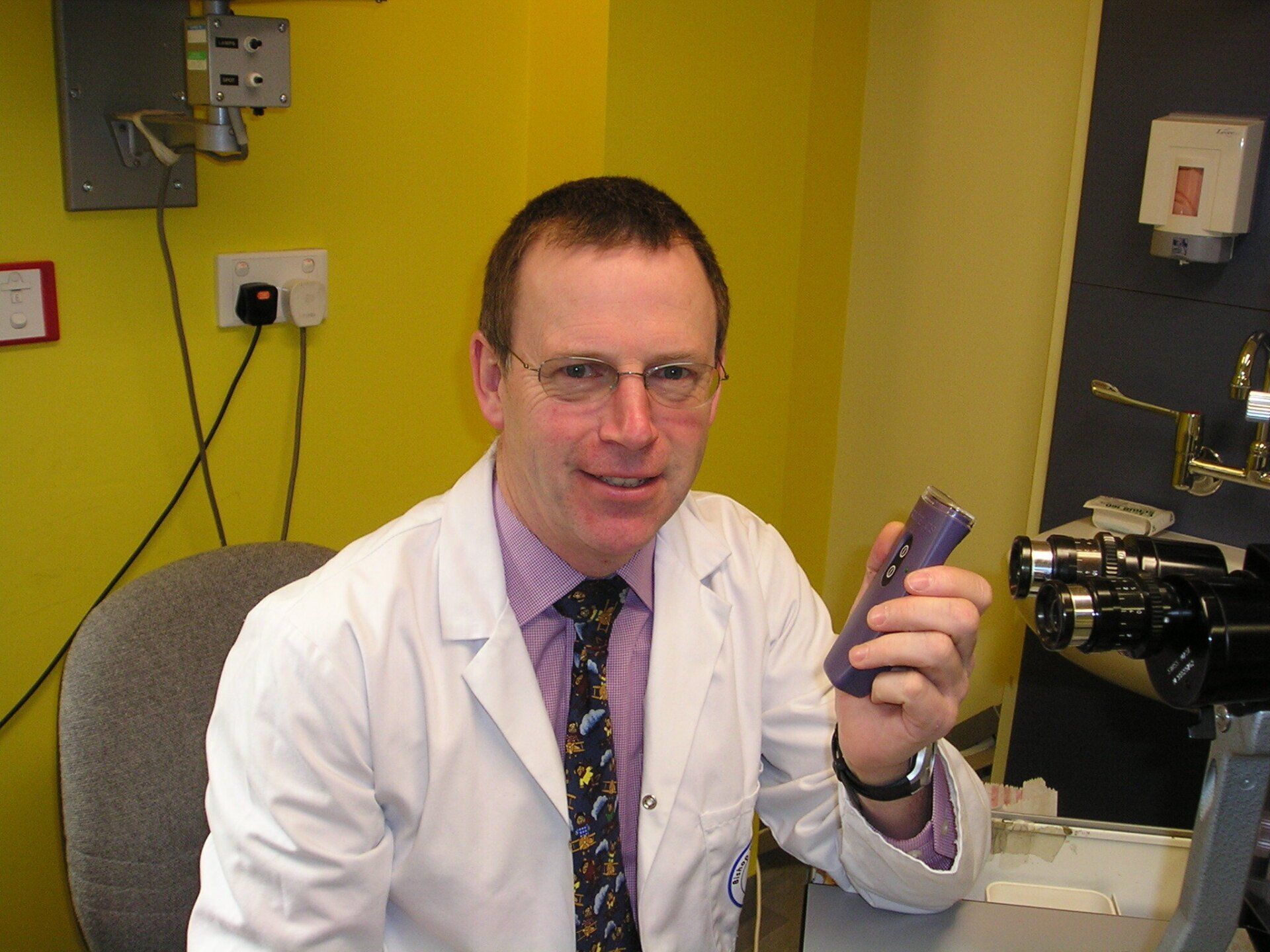
Dr Gordon Dougal

Mr James Haslam
The Innovation
The project was started two decades ago by two County Durham doctors, inventor GP, Dr Gordon Dougal and Consultant eye surgeon Mr James Haslam discovered a specific wavelength of light which showed therapeutic potential. Developing a therapeutic tool involves painstaking testing of every new development. Over the first few years it was found that there were a narrow range of wavelengths that had the desired therapeutic properties. The initial research was in the treatment of cold sores , reducing the healing time by almost 50%.
Dr Dougal teamed up with Dr Chazot in the year 2000 to develop the basic science behind the technology. The first initial publication indicated that this specific wavelength of light was cytoprotective, making human cells more resilient. The enhanced cellular resilience was unique to a narrow range of NIR wavelengths and not to the entire NIR spectrum. Formulating the next steps required years of painstaking research, with a great deal of trial and error. Various modulations of the this specific wavelength of NIR light was tried on our cold sore model, a significant proportion of the these did not achieve statistical significance and intriguingly modulations that worked for one condition failed to work for other conditions.
Further studies conducted at Durham University identified an interesting phenomenon, the modulated light worked differently according to the age of the individual. The challenge was find a method targeting cellular function relative to age. The research was expanded to USA, working with colleagues in Philadelphia and Texas, we gradually improved and optimised the technology, aided by laboratory models.
A crucial step, made by Dr Chazot, was the discovery that the light treatment not only protected brain cells from early death in the presence of adverse factors but also inhibited the accumulation of the toxic B amyloid protein which accumulates in the brain of Alzheimer’s sufferers.
Intellectual function peaks between the ages of 35 – 45, after which these is a gradual decline with loss of neuronal interconnectivity and associated intellectual function. Individuals compensate for the loss of processing speed with memories of past experiences which are quickly accessed without requiring significant processing speed.
Over the last 5 years, great strides were made in identifying the way in which the light is delivered to the target tissue, which was key the clinical success in the published trials.
